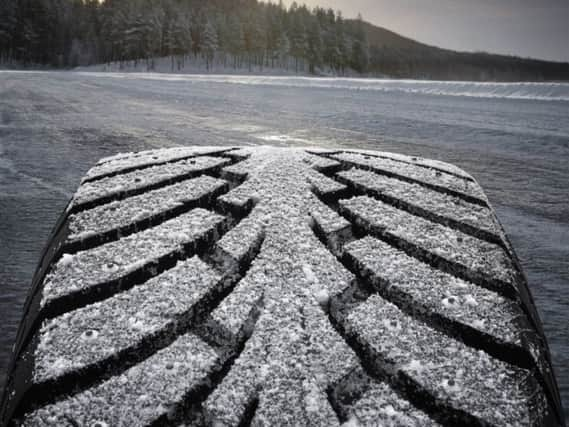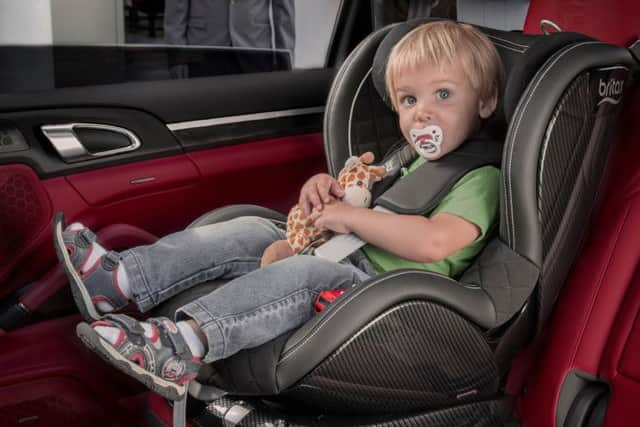Wheels and deals


While the over-50s contribute about 47% of the total UK’s motoring spend, the insurer says, their mileage costs them about 63% more than for younger drivers.
This is partly because the over-50s choose new and premium cars more often than the under-50s, with more than 60% of the new car spend coming down to older drivers.
Advertisement
Hide AdAdvertisement
Hide AdAnd in the year up to September 2015 they were twice as likely to buy a Porsche, Mini or Jaguar than the rest of the population.


These more premium cars could also be linked to rising maintenance and spare parts bills for the over-50s.
Saga reports a typical motoring spend of £311 per month in an over-50s household.
But greater pressure on fixed incomes like pensions means that extra expenses like car parking mean that this age group are particularly choosy over where to shop. Free parking is often a deciding factor, a survey of 10,000 older drivers found.
Advertisement
Hide AdAdvertisement
Hide AdRoger Ramsden, chief executive of Saga Services, said: “Motoring plays a vital role in keeping people over 50 mobile, independent and engaged in social activities and therefore saving the Government significantly in care and health costs.


“It is essential the Government keeps motoring costs under control for older age groups.
“Saga is fighting for fair motoring charges including cuts to the cost of car parking at hospitals and abolition of Vehicle Excise Duty, [which we believe] imposes an unfair burden on older drivers who drive fewer miles, but for whom a car is essential.”
:: Tyre maker Goodyear has issued handy advice to drivers in the wake of snowy weather forecasts in parts of the UK.
Advertisement
Hide AdAdvertisement
Hide AdThe company has carried out research that suggests 53% of drivers find driving in snow and ice nerve-racking. Almost half (48%) list de-icing car glass as a problem they could do without, and a quarter claim that wintry conditions add 10-20 minutes onto their commute.
Steve Morris, technical services manager from Goodyear Tyres UK, has offered some useful tips on top of the usual advice concerning lowering your speed and keeping a much greater distance.
He says to be particularly careful over bridges, which are well known for developing icy patches.
Also on the list is not to ‘pump’ your brakes. Goodyear is urging drivers to use the gears gently to slow down wherever possible, but to use a steady pressure on the brakes whenever you use them. The car’s anti-lock brake system will manage the car to a halt, and more steering function will be maintained.
Advertisement
Hide AdAdvertisement
Hide AdAvoiding distractions is also key because the margin for error is so much smaller, the company says. Reduced visibility is likely in winter.
But crucial to safe winter driving is the right set of tyres. Steve Morris said: “Most drivers find that winter tyres give them extra security when they’re driving in challenging weather conditions.
“This is because they are made from a specially-formulated softer tread compound and have enhanced tread patterns which include extra slits called ‘sipes’. These characteristics give the tyre extra bite to grip winter roads, steep hills and corners, especially in cold, snow and icy conditions.”
“We recommend fitting the right tyre for the right season. You wouldn’t choose to wear flip flops in the snow and you wouldn’t wear your fur-lined boots on a hot summer’s day. The same goes for tyres.
Advertisement
Hide AdAdvertisement
Hide Ad“Having the right equipment for the conditions is an important factor to enhanced performance and safety.”
:: Almost half of parents across Europe have little or no understanding of the term Isofix, despite it being the simplest way to secure a child seat into a car safely.
Some 44% of mums and dads quizzed by child seat maker Britax had either never heard the word or had a limited understanding of what it refers to.
Badly-installed child seats are a major contributing factor to child injuries in car accidents. Isofix was designed by Britax and Volkswagen in the 1990s to give parents an easy way to remove the hassle of seatbelt-secured seats.
Advertisement
Hide AdAdvertisement
Hide AdThe system is simple. Special anchoring points attached to the car’s chassis are designed into the outer rear seats of almost all modern cars, and sometimes even front passenger seats too. Any Isofix car seat should, in theory, click straight into these anchoring points and be 100% secure.
Britax has released a light-hearted YouTube video featuring two seven-year-old boys discussing the benefits of the system. One of the boys is an ‘experienced big brother’ and explains how it works to his friend, who has a sibling on the way.
Mark Bennett, child safety expert at Britax, commented: “Britax always strives to support parents through the innovative design of their products, that’s why we want to continue spreading the word about Isofix.
“Isofix is an incredibly safe, quick and easy to use system that simplifies the busy lives of mums and dads and gives them the confidence to install their child seats in an intuitive way.”
Separate research by the German Insurance Institute found that only 30% of seatbelt-secured child seats were installed correctly, compared to 96% in Group 1 car seats.